Tube-Tech CL 1B Handleiding
Bekijk gratis de handleiding van Tube-Tech CL 1B (9 pagina’s), behorend tot de categorie Niet gecategoriseerd. Deze gids werd als nuttig beoordeeld door 54 mensen en kreeg gemiddeld 4.7 sterren uit 27.5 reviews. Heb je een vraag over Tube-Tech CL 1B of wil je andere gebruikers van dit product iets vragen? Stel een vraag
Pagina 1/9

LYDKRAFT ApS
Mose Allé 20, DK 2610 Rødovre
Denmark
1
TUBE-TECH CL 1B
Compressor
DESCRIPTION.
The TUBE-TECH compressor CL 1B differs from many other compressors, in that the gain-
reduction element is made from a non-semiconductor element, which in itself has a very low
harmonic distortion and none of the non-linearity problems involved when using most
semiconductor elements. Furthermore there is no long-term degradation of the element thus
giving it almost innite life. This element is placed after the input-transformer of the compressor
and followed by an all tube-based amplier with a gain of -dB to +30 dB.
Thus the signal is not fed through any semiconductor circuitry on its way to the output.
The amplier consists of two tubes (valves) in push-pull conguration (one ECC 83 as the
pre-amp and phase splitter, and one ECC 82 as the output stage), and an output transformer.
The power supply for the pre-amp and phase splitter are stabilized and the heaters of both
tubes (valves) are fed with a stabilized DC voltage.
The whole amplier (including input and output transformer) and the power supplies are placed
on one PC-board.
Both input and output are balanced (600
) and fully oating.
The in/out key switches the compressor in and out without clicks.
THE SIDECHAIN:
The side chain is the only part of the compressor that contains semiconductors. They are used
for three reasons: First they do not affect the sound reproduction, second they have a high slew
rate, which is of importance for the performance of the compressor and third they don't take up
much room.
It contains two J-FET quad op-amps, one npn-transistor and one FET-transistor, which handles
the signal for the gain-reduction element.
The compressor contains two time constants circuits:
1. Fixed attack and release times
2. Variable attack and release times
The attack/release select switch makes it possible to use these two circuits separately or
combine their functions.
This gives a feature not normally obtained in other compressors:
In the combined (fix. /man.) state the attack- and release controls makes it possible to
obtain a complex release-time slope. (See page 4)
(980112)

LYDKRAFT ApS
Mose Allé 20, DK 2610 Rødovre
Denmark
2
COMPRESSOR INTERCONNECTION:
The side chain sockets for interconnection of several compressors are located on the rear
panel.
A switch (BUS SELECT) on the front selects which compressors are interconnected, and on
which bus they are connected. If you e.g. have 10 compressors in a rack, you can select
compressor 1,5,7 and 8 on bus 1, and compressor 2,3,6 and 9 on bus 2, leaving compressor 4
and 6 in the off position.
Compressors 1,5,7,8 are now interconnected and all four will perform the exact same
compression. This applies to compressor 2,3,6 and 9 as well. Compressor 4 and 6 are
independent.
The interconnection implies, that the unit, which performs the most compression, is controlling
the others.
To choose which one you want to control, select the attack/release time, the threshold and the
ratio on that unit, and turn the threshold fully counter clockwise on the reminding compressors.
It is of course possible to have all the interconnected compressors control each other
simultaneously.
NB: Remember to set the ratio control and the gain control in the same position on the
"slaves". Otherwise the stereo image could be shifted during compression. The
attack/release-control on the slaves will have no effect.
The input/output capability of the side chain-circuit allows up to ten compressors to be linked
together.
They are connected in parallel with a standard 1/4" stereo jack/-jack cord (tip: bus 1, ring: bus
2).
The two jack socket on the rear panel is connected in parallel and both are input/output.
(980112)

LYDKRAFT ApS
Mose Allé 20, DK 2610 Rødovre
Denmark
3
CONTROLS:
GAIN: The gain control is used to "make up" for the gain loss, which takes place
when the unit is compressing. It is placed after the gain-reduction circuit
and therefore has no influence on the threshold setting. The gain-control is
continuously variable from off to +30 dB.
RATIO: The ratio control varies the ratio by which the input signal is compressed.
If the ratio selected is to 2:1, and the input signal increases 10 dB, the
output signal is only increased by 5 db. The ratio control is continuously
variable from 2:1 to 10:1.
THRESHOLD: The threshold is the point where the compressor begins its action. It is
dened as the point where the gain is reduced by 1 dB.
The threshold is continuously variable from +20dBU to -40 dBU.
METER:
The VU-meter switch has three positions:
1. Input The meter is reading the level at the input socket.
2. Compression
The VU-meter is reading gain reduction.
Its rest position is "0 VU", and the amount of
compression is shown as a decreasing deection in
dB.
3. Output The VU-meter is reading the level at the output socket.
"0 VU" is equivalent to +4 dBU.
NB: Leave the meter switch in position compression as it might
introduce distortion if left in the input or output position.
IN/OUT: This leverswitch switches the compressor in and out of the signal path. The
out position bypasses the entire compressor.
ATTACK: The attack control chooses how fast/slow the compressor responds to an
increase in the input signal.
The attack control is continuously variable from 0.5 to 300 milliseconds.
RELEASE: The release control chooses how fast/slow the compressor responds to a
decrease in the input signal.
The release control is continuously variable from 0,05 to 10 seconds.
(980112)
Product specificaties
| Merk: | Tube-Tech |
| Categorie: | Niet gecategoriseerd |
| Model: | CL 1B |
Heb je hulp nodig?
Als je hulp nodig hebt met Tube-Tech CL 1B stel dan hieronder een vraag en andere gebruikers zullen je antwoorden
Handleiding Niet gecategoriseerd Tube-Tech

28 Februari 2024
Handleiding Niet gecategoriseerd
- Magnavox
- FeiYu-Tech
- MyPhone
- Tru Components
- IRIS
- Aguilar
- LD Systems
- Tot Tutors
- Blackhawk
- Harvia
- Randell
- Ansco
- Kwantum
- Murideo
- Salewa
Nieuwste handleidingen voor Niet gecategoriseerd
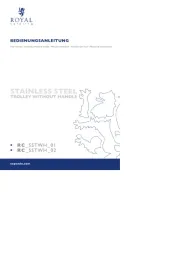
18 September 2025

18 September 2025
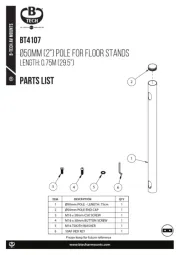
18 September 2025
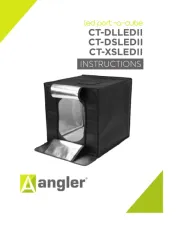
18 September 2025
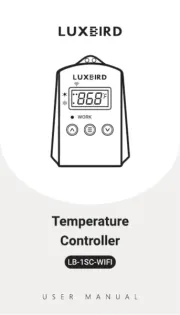
18 September 2025
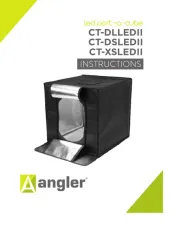
18 September 2025
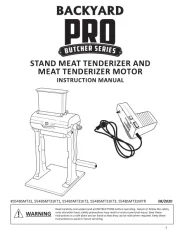
18 September 2025
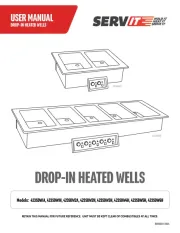
18 September 2025
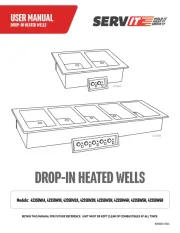
18 September 2025
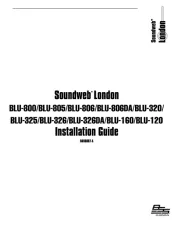
18 September 2025